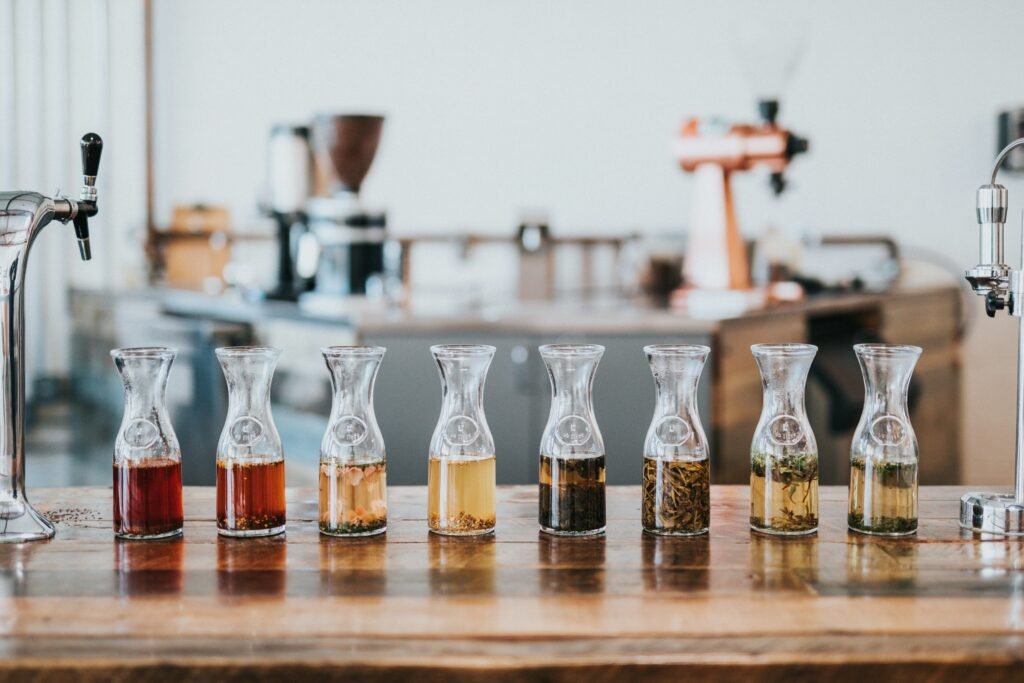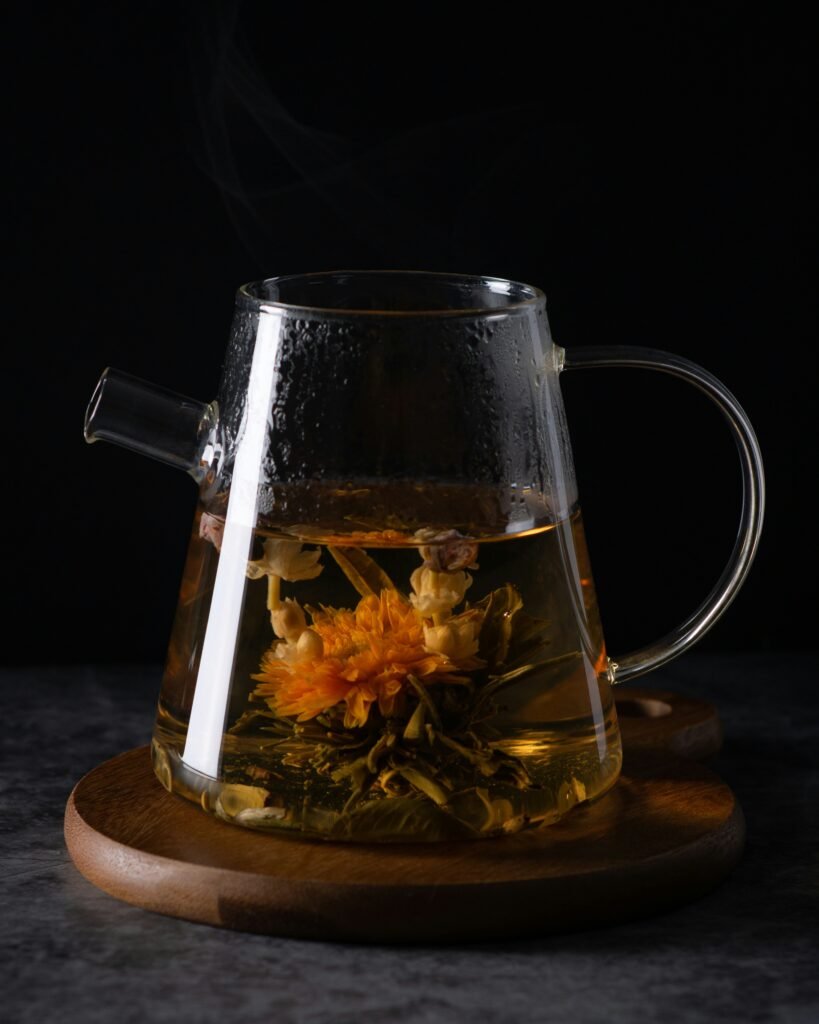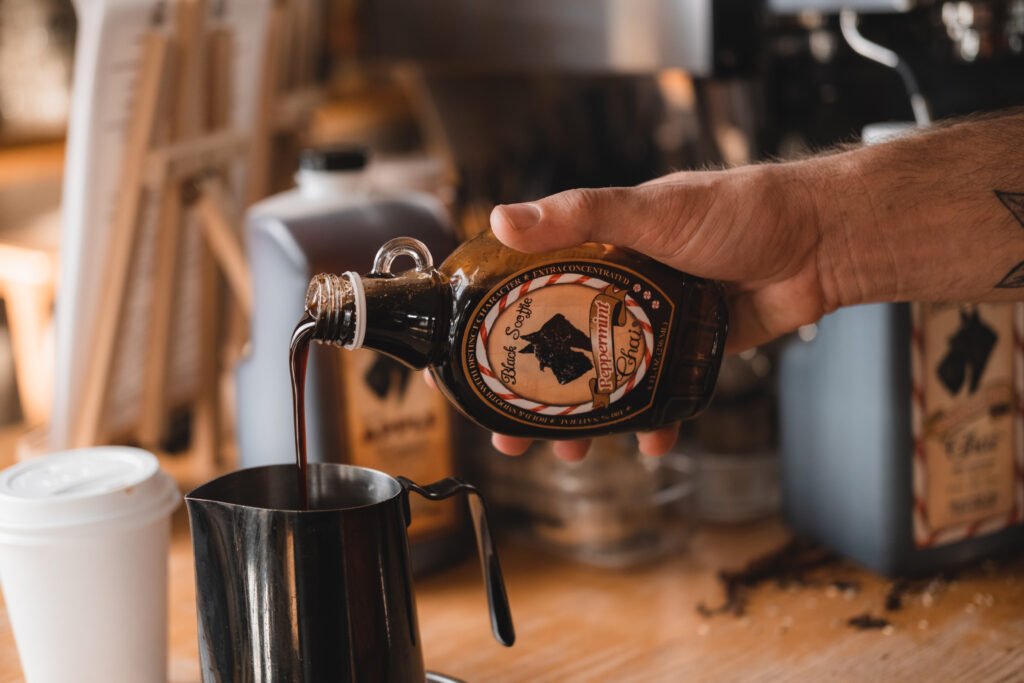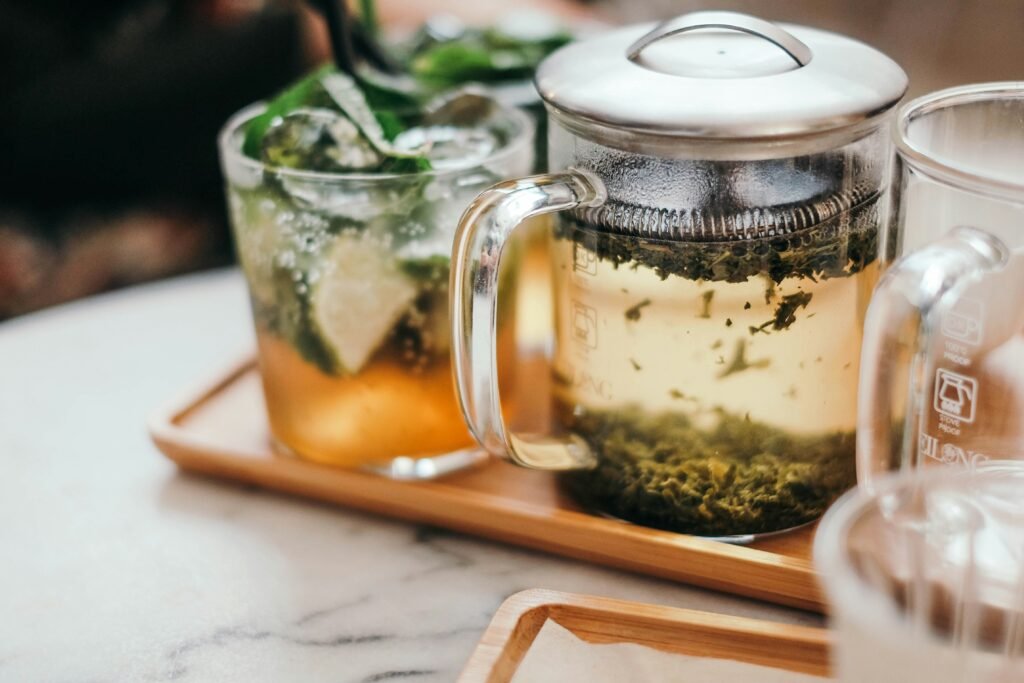Types of Tea: Unveiling the World of Tea
Imagine this: you’re curled up on the couch, a good book in hand, and a craving for a warm, comforting beverage hits. But with so many types of tea lining the shelves, the decision becomes overwhelming. Do you go for the classic black tea, the grassy notes of green, or perhaps something more exotic? Fear not, tea novice! This comprehensive guide will unveil the wonderful world of tea, equipping you to navigate the diverse and delicious options available.

First, let’s address the common misconception: chai itself isn’t a specific type of tea, but rather a spiced beverage traditionally made with black tea as a base. Think of it like a flavored coffee – the black tea provides the foundation, while the spices like ginger, cardamom, and cinnamon add a unique flavor profile [1]. However, chai blends can also be made with other types of tea, or even rooibos, depending on your preference.
Now, let’s delve into the true types of tea, all surprisingly derived from the same plant – Camellia sinensis. The magic lies in the processing methods, which unlock a spectrum of flavors and characteristics. Buckle up, because we’re about to embark on a flavorful journey!
The Classics: Black, Green, and White
Black tea, the most popular type globally, undergoes a full oxidation process, resulting in a robust, full-bodied flavor with a dark amber color [2]. English Breakfast tea, known for its bold and invigorating character, falls under this category. Green tea, on the other hand, boasts a vibrant emerald hue and a delicate, grassy taste due to minimal oxidation. Packed with antioxidants, green tea is a favorite among health-conscious tea drinkers [3]. White tea, the least processed among these three, offers the subtlest flavor profile, often described as light and refreshing.
Beyond the Basics: Oolong, Pu-erh, and Beyond
Oolong tea bridges the gap between green and black tea. Partially oxidized, oolongs come in a wide variety, with flavor profiles ranging from light and floral to toasty and complex. Pu-erh tea takes things a step further – it undergoes microbial fermentation, creating a unique earthy taste and aroma. Often aged for years, pu-erh tea is a niche but fascinating type for adventurous palates [4].
But the world of tea extends far beyond these core types. Yellow tea, a rare and delicate variety, undergoes a unique slow-drying process. Dark teas, like Black Scottie Chai’s delicious chai mixes (though they use a black tea base!), are fully oxidized and often compressed into cakes or bricks, perfect for long-term storage [5].
Herbal Infusions: A World of Botanical Brews

Now, let’s address the elephant in the room (or rather, the herb in the cup!). Herbal infusions, often mistakenly called teas, are a distinct category. Unlike true teas derived from Camellia sinensis, herbal infusions are made by steeping various herbs, flowers, fruits, and spices in hot water. From calming chamomile to invigorating peppermint, the possibilities are endless when it comes to herbal infusions.
Navigating the Nuances: Brewing Tips for Every Type
With so many types of tea, brewing techniques can vary slightly. However, some general principles apply. Water temperature plays a crucial role – excessively hot water can burn delicate green teas, while cooler temperatures might not properly extract flavor from black teas. Using a teapot or infuser allows for easy steeping and removal of loose leaves. Most importantly, experiment and find what works best for your taste buds!
Beyond the Cup: The Cultural Significance of Tea
Tea is more than just a beverage; it’s woven into the cultural fabric of many societies. From the traditional Japanese tea ceremony, a meditative ritual steeped in respect, to the afternoon tea ritual in England, a social gathering centered around elaborate tea settings and delectable treats, tea transcends cultures and brings people together [6, 7].
Conclusion: A World of Flavor Awaits

The world of tea offers a diverse and delightful exploration for the curious drinker. From classic black teas to adventurous pu-erhs and soothing herbal infusions, there’s a perfect cup waiting for every palate. So, the next time you reach for a cup of tea, remember the fascinating journey this simple beverage has taken to reach your hands. Now, the question remains – which flavor adventure will you embark on today?
- Heilbrunn Department of Cultures, Metropolitan Museum of Art, “Heilbrunn Timeline of Art History: Tea.” The Metropolitan Museum of Art Accessed June 8, 2024.
- Britannica, “Black tea.” Encyclopedia Britannica Accessed June 8, 2024.
- National Institutes of Health, “Green Tea.” National Center for Complementary and Integrative Health Accessed June 8, 2024.
- Tea Guardian, “A Beginner’s Guide to Pu-erh Tea.” Tea Guardian Accessed June 8, 2024.
- Upton Tea Imports, “Dark Tea.” Upton Tea Imports Accessed June 8, 2024.
- The Metropolitan Museum of Art, “Japanese Tea Ceremony.” The Metropolitan Museum of Art Accessed June 8, 2024.
- Afternoon Tea at Buckingham Palace, “History of Afternoon Tea.” The Royal Household Accessed June 8, 2024.

